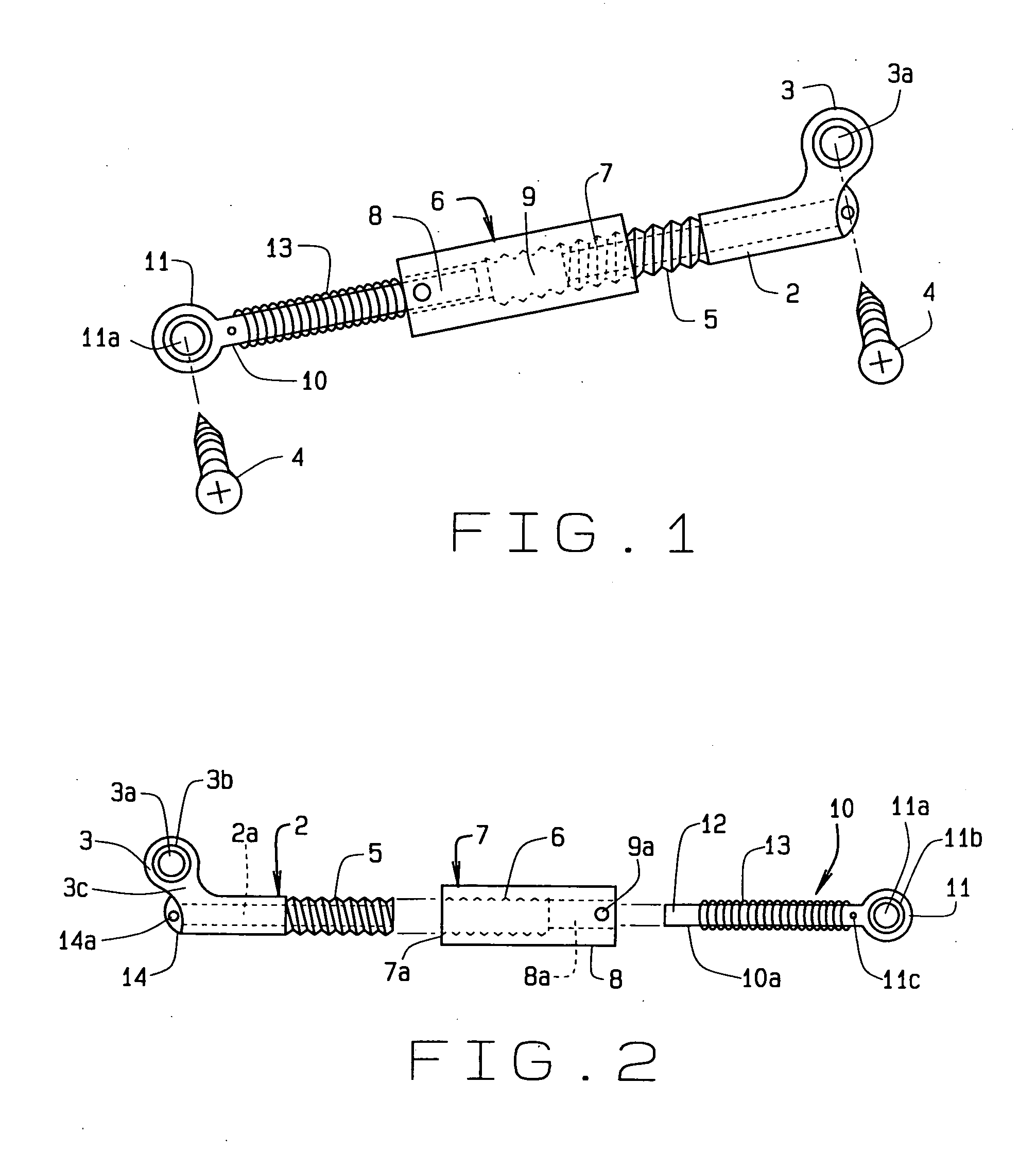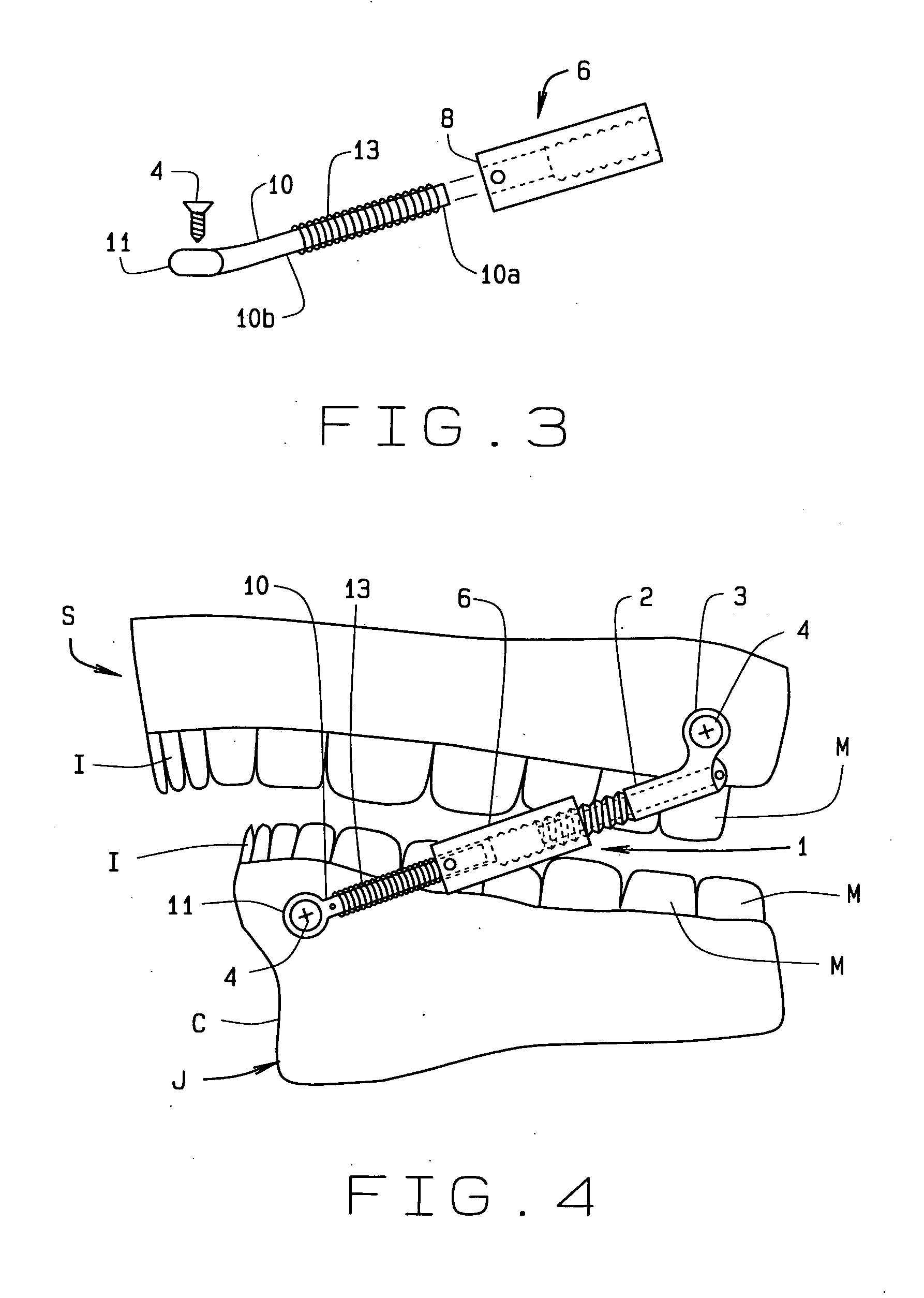Jaw advancer connected to bone
a jaw advancer and bone technology, applied in the field of jaw advancers connected to bone, can solve the problems of increasing salivation in the mouth and requiring time to accomplish the forward motion
- Summary
- Abstract
- Description
- Claims
- Application Information
AI Technical Summary
Benefits of technology
Problems solved by technology
Method used
Image
Examples
Embodiment Construction
[0026]In referring to the drawings, FIG. 1 shows one jaw advancer 1 of the two required to treat a jaw symmetrically. The jaw advancer has an upper member 2 having an elongated cylindrical shape in the form of an L, when seen from the side. The upper member is generally hollow. The upper member has a head 3 offset and perpendicular to the length of the upper member. The head is generally rounded and has a hole 3a to admit a mechanical fastener, here shown as a screw 4. Opposite the head, the upper member has a threaded end 5.
[0027]The advancer then has a socket 6, generally cylindrical in shape and also hollow, with two opposed ends. The socket has a threaded end 7 that cooperatively engages the threaded end of the upper member. Opposite the threaded end, the socket has a smooth bore 8. Upon the surface of the socket, marks 9 assist an orthodontist, or in some cases a patient, in turning the socket which effectively lengthens the advancer to move the jaw forward.
[0028]Opposite the u...
PUM
 Login to View More
Login to View More Abstract
Description
Claims
Application Information
 Login to View More
Login to View More - R&D
- Intellectual Property
- Life Sciences
- Materials
- Tech Scout
- Unparalleled Data Quality
- Higher Quality Content
- 60% Fewer Hallucinations
Browse by: Latest US Patents, China's latest patents, Technical Efficacy Thesaurus, Application Domain, Technology Topic, Popular Technical Reports.
© 2025 PatSnap. All rights reserved.Legal|Privacy policy|Modern Slavery Act Transparency Statement|Sitemap|About US| Contact US: help@patsnap.com



